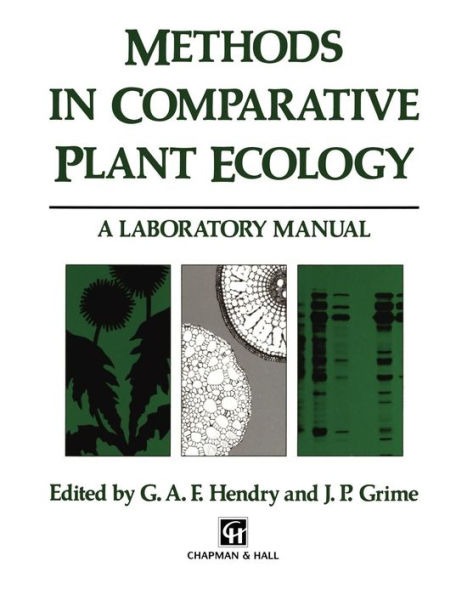Table of Contents
1 Introduction.- 1.1 The need for comparative laboratory studies.- 1.2 How to use the manual.- 1.3 Abbreviations.- 2 General procedures and methodologies.- 2.1 Seed collecting, cleaning and long-term storage.- 2.2 Seed viability and germination.- 2.3 The ISP aerial environment: lighting, day length, temperature and humidity.- 2.4 ISP germination and rooting environments; sand, compost and solution culture.- 2.5 Harvesting, recording weight, area and length.- 2.6 Photographic recording.- 2.7 The ISP standard regime.- 3 Methods of comparative study.- Anatomy.- 3.1 Aerenchyma, intercellular gas space and aeration.- 3.2 Functional plant anatomy.- DNA.- 3.3 Chromosome number.- 3.4 Nuclear DNA amount.- Environmental impacts.- 3.5 Anoxia tolerance in germinating seeds, rhizomes, stolons and tubers.- 3.6 Response to defoliation.- 3.7 Desiccation tolerance.- 3.8 Drought tolerance.- 3.9 Effect of high temperatures on protein synthesis.- 3.10 Herbicide selectivity.- 3.11 Plant responses to low temperatures.- 3.12 Ozone sensitivity.- 3.13 Sulphur dioxide pollution.- 3.14 Sunfleck utilization.- 3.15 Ultra-violet (UV-B) radiation.- Growth.- 3.16 Adventitious rooting of cuttings.- 3.17 Carbon budget.- 3.18 Day length responses.- 3.19 Establishment in a vertical light gradient.- 3.20 Foraging for light.- 3.21 Foraging for mineral nutrients.- 3.22 Fresh weight/dry weight and related ratios.- 3.23 Constant temperature and shade.- 3.24 Fluctuating temperature and drought.- 3.25 Mean relative growth rate.- 3.26 Response to carbon dioxide enrichment.- 3.27 Variation in RGR underlying carbon economy.- Leaves.- 3.28 Decomposition.- 3.29 Defence chemistry.- 3.30 Longevity.- 3.31 Palatability.- 3.32 Tearability.- Metabolism.- 3.33 Calculation of specific activities of enzymes.- 3.34 Carbon isotope discrimination and water use efficiency.- 3.35 Nitrate reductase activity.- 3.36 Acid phosphatases.- 3.37 Photosynthesis and chlorophyll fluorescence: simultaneous measurements.- 3.38 Photosynthesis and respiration: use of O2electrodes.- 3.39 Respiration: the alternative pathway.- 3.40 Respiration: cyhrome c oxidase activity.- 3.41 Storage carbohydrates.- 3.42 Stress indicators: chlorophylls and carotenoids.- 3.43 Stress indicators: electrolyte leakage.- 3.44 Stress indicators: lipid peroxidation.- Mineral nutrients.- 3.45 Chemical analysis.- 3.46 Uptake and yield.- Roots.- 3.47 Architectural analyses.- 3.48 Mycorrhizal infection: assessment and quantification.- 3.49 Penetration and response to drought.- Seeds.- 3.50 Buoyancy in air.- 3.51 Defence chemistry (cyanide).- 3.52 Defence chemistry (phenols).- 3.53 Dormancy breaking.- 3.54 Germination at alternating temperatures.- 3.55 Germination at a range of constant temperatures.- 3.56 Germination and the high irradiance reaction.- 3.57 Germination and soil water potential.- 3.58 Mineral nutrient content.- 3.59 Morphology and colour.- 3.60 Organic reserves.- 3.61 Persistence in soil.- 3.62 Size.- Shoots.- 3.63 Architecture and vigour.- Toxicity.- 3.64 Aluminium.- 3.65 Cadmium sensitivity and constitutive resistance.- 3.66 Iron.- 3.67 Sulphide.- 3.68 Variability in seed storage proteins.- 4 Quantitative synthesis.- 5 Epilogue: the future development of comparative methodologies.- The problem.- The search for an answer.- Species index.



